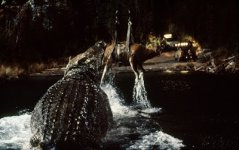- May 27, 2021
- 668
- Pool Size
- 17000
- Surface
- Fiberglass
- Chlorine
- Salt Water Generator
- SWG Type
- Pentair Intellichlor IC-40
Roughly two years ago I bought a used but in good condition IPH to manage ph with my IC40. Everything worked well until this year when the IC40 started randomly power cycling, running through the startup procedure then shutting off and starting the same loop. In troubleshooting I noted when the IC40 was disconnected from the iph and run stand-alone it performed flawlessly.
Having read other threads I was familiar with the Iph burned connector issue and decided to open the unit to investigate. When I got the unit disassembled, I noted no burning but some slight corrosion on the pins of the connector where the red leads attached. I cleaned all connections, used deoxit, reassembled and put the unit back into service. It worked fine until two days ago when the same symptoms reappeared.
Upon inspection this time, I noted a slight burning on the pin in the connector that supplies power via the red wire to the ic40. Other than that everything looked fine. Knowing the issue, I called pentair support for giggles and not surprisingly the only answer on their end was to replace the entire board and faceplate. Shocking I know……
Having read other threads where Dirk and ogdento weighed in with a fix and diagrams to bypass the connector with jumper wires I decided I had nothing to lose by employing the likely fix. It worked like a charm and no issues with the unit back in service at this point. Thanks to @Dirk and @ogdento for their disussion and diagrams in other threads that lead me to this fix. I’ll attach some pics of my repair based on their work. Don't flame my electrical work too much
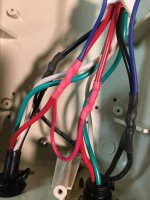
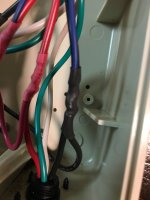
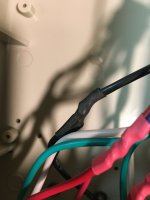
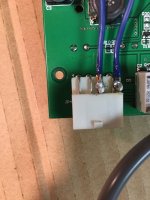
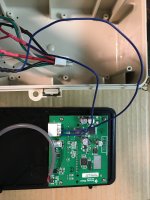
Having read other threads I was familiar with the Iph burned connector issue and decided to open the unit to investigate. When I got the unit disassembled, I noted no burning but some slight corrosion on the pins of the connector where the red leads attached. I cleaned all connections, used deoxit, reassembled and put the unit back into service. It worked fine until two days ago when the same symptoms reappeared.
Upon inspection this time, I noted a slight burning on the pin in the connector that supplies power via the red wire to the ic40. Other than that everything looked fine. Knowing the issue, I called pentair support for giggles and not surprisingly the only answer on their end was to replace the entire board and faceplate. Shocking I know……
Having read other threads where Dirk and ogdento weighed in with a fix and diagrams to bypass the connector with jumper wires I decided I had nothing to lose by employing the likely fix. It worked like a charm and no issues with the unit back in service at this point. Thanks to @Dirk and @ogdento for their disussion and diagrams in other threads that lead me to this fix. I’ll attach some pics of my repair based on their work. Don't flame my electrical work too much







